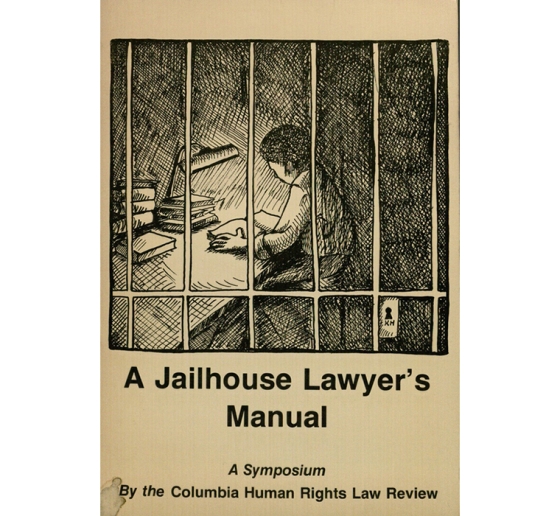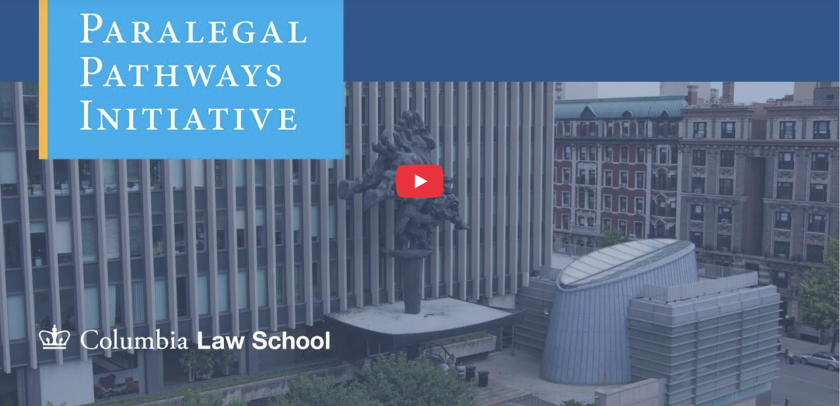A New Chapter for ‘A Jailhouse Lawyer’s Manual’
The reference handbook, produced by Columbia Law School students to help people in prison learn about and exercise their rights, is—for the first time—being revised in collaboration with people who have experienced incarceration.

Columbia Law School students have been publishing and distributing A Jailhouse Lawyer’s Manual since 1978. When the 14th edition of the legal resource work is published in 2027, it will be the first edition written, in part, by jailhouse lawyers themselves.
Incorporating the expertise of formerly incarcerated individuals into the revision will help the editors make the content easier to navigate and more relevant to actual situations people in prison face, says Susan P. Sturm, George M. Jaffin Professor of Law and Social Responsibility and director of the Center for Institutional and Social Change, which is working with the editorial board of the Jailhouse Lawyer’s Manual in the reimagining process. It will also strengthen the ability of people in the criminal legal system to advocate for themselves: “Our responsibility as lawyers is not just for us to be the ones who are interacting with the courts,” she says. “We are trying to help people understand the law so that they can exercise their own legal rights and advocate for themselves.”
An Essential Collaboration
Since its founding, A Jailhouse Lawyer’s Manual (JLM) has been updated every three years by student editors under the aegis of the Columbia Human Rights Law Review. For the current revision, teams made up of Columbia Law students and formerly and currently incarcerated people are editing each chapter of the handbook—which cover topics such as undertaking legal research and challenging a conviction or sentence.
A new fellowship, Legal Literacy at Work, created by Sturm in partnership with formerly incarcerated leaders, brings together nearly a dozen people who have experienced incarceration to work with the staff of the publication. While previous revisions of the JLM included “ad hoc” consultation with people who have experienced incarceration, Sturm says, “co-authorship and building in systematic involvement of people directly impacted is new.”
“We should be getting input from those who know best how the JLM should serve its readers,” says current JLM Editor-in-Chief Jennifer Li ’26. Alcira Silva Hava ’25, who worked on the revision process while serving as the JLM’s 2024–2025 editor-in-chief, agrees, adding that input from people with experience of incarceration is vital “because they are able to provide us with insights that we law students could not have.”
One of the fellows is Marc Ramirez, a court attorney in New York Criminal Court and former lawyer at Bronx Defenders and Legal Aid who earned his undergraduate and law degrees after he was released from federal incarceration.
“I could not have imagined when I picked this book up, probably 25 years ago, in Allenwood [federal prison] … that all these years later, I’d be working on it with these students. Who would have thunk it?” Ramirez says. “I thought it was important to contribute to it somehow, if I could. This reimagining is really a big deal. So I’m excited to be part of it, really proud to be part of it, and I can’t wait to see what it ends up being.”
Making Self-Advocacy Accessible
The plans for the revision involve successive JLM editorial boards and include reexamining both the content and the design of the current manual. With funding from a Provost’s Innovative Course Design grant, chapter revision teams brought in experts from Columbia’s School of Social Work, Teachers College, and the Mailman School of Public Health to discover the best ways to present information to accommodate different learning styles, and a graphic designer provided additional input. Information is presented at an eighth-grade reading level; tables, a glossary, and other tools break down legal terms and procedures; and flow charts and other visual aids show steps users might take in different processes—for example, requesting early release from incarceration.
Previous editions have been “such dense blocks of text,” Li says. “We’re really trying to reorganize it in a way that makes sense to the reader who is trying to figure out the steps they have to take to approach a lawsuit or a program such as temporary release, and what challenges they might encounter.”
“It’s just making it more understandable. We can tell [the Columbia Law students], ‘That word you use, it needs to be explained,’” Ramirez says. “Legalese is just a different language.”
The material in the JLM also needs to reflect the reality of incarcerated life and the often extraordinarily complex rules governing different legal situations, Sturm says. For example, information on how to do legal research is key for incarcerated people trying to advocate for themselves, but those instructions also need to account for time and access limitations.
“If you write that chapter as if the reader has unlimited access to Lexis and Westlaw, as if they can go to the library as much as they want and need to, as if it doesn’t matter whether they’re in solitary confinement, maximum security, in a women’s facility, in a men’s facility, you might not actually be equipping somebody to do legal research,” Sturm says. “You can’t just say ‘Look up this case.’ You have to say, ‘What happens if you only have [limited] time? Where else can you get help? How do you use the time that you have?’”
Ensuring that the book is available in prison law libraries is also a priority; physical copies of the JLM are scarce enough that the book includes a request that users not rip out pages for future use. The current JLM is available online and can be downloaded in its entirety in prisons where incarcerated individuals can use tablets, but it is “clunky,” Sturm says. The editorial team hopes to make the new edition in a shareable digital format.
The upcoming edition will also feature some reorganized chapters, Sturm says; for example, there will be a separate chapter on obtaining clemency or compassionate release, which was previously incorporated in a chapter on obtaining parole. And the 14th edition will address legal issues not covered in previous manuals that the teams learned are especially relevant based on feedback from the formerly incarcerated team members.
A Formative Experience
As an undergraduate, Li started a legal help desk at a homeless shelter. The experience led her to law school and working on the JLM. “I feel it is one of the most tangible projects you could do in law school,” she says. “I’m doing it because I feel like there’s a need and I can help and I care.”
“When lawyers work for people who have money, they say, ‘What is it that you need? How can I be a partner with you in helping you realize your aims?’” Sturm says. “People who are incarcerated should be treated with that same kind of respect, not only because people need to be respected but because they actually know things we don’t know as lawyers.”
As a 2L staffer on the JLM, Li says she spent hours cite checking, just like many other legal jobs. “But it’s the purpose that makes you continue and makes things worthwhile. The idea that there are so many people relying on the JLM makes it even more meaningful. It adds to the pressure, but it’s a good type of pressure.”

